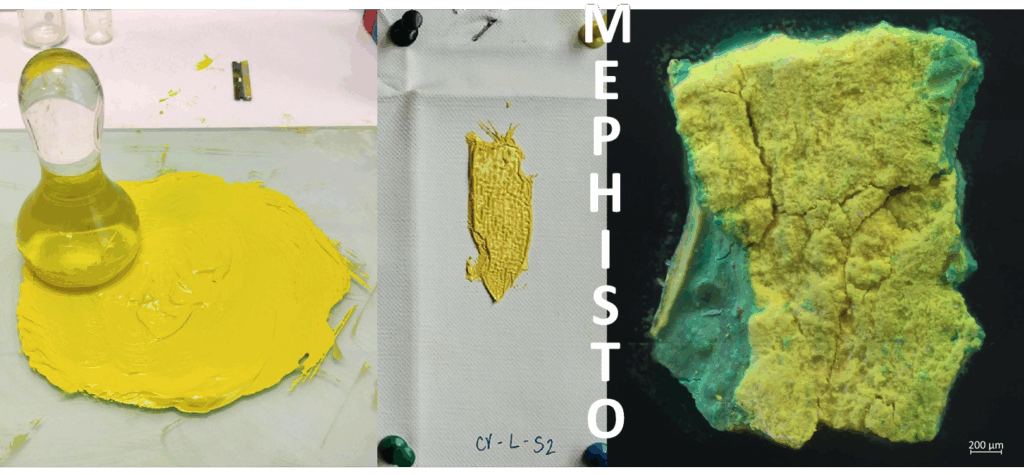
MEPHISTO
Study of physico-chemical mechanisms involved in the drying of impasto oil paints: mockups and historical samples of modern paintings
Scientific responsibility :
- Chloë Coustet
- Mathieu Thoury
Methodological axes :
Thematic fields :
Disciplinary sectors :
Partnership :
Funding :
- DIM PAMIR
Project ID : IDF-DIM-PAMIR-2025-11-011
Summary :
Some modern oil paintings from the mid-20th century, particularly those associated with the Second School of Paris, exhibit a phenomenon of softening of the paint layers. First observed in the 1990s, these alterations manifest as soft impasto, tacky surfaces, or binder exudation, compromising both the material stability and the visual appearance of the works. The underlying physico-chemical mechanisms remain difficult to unravel, as does the role of factors such as drying conditions or the use of siccatives. To address this issue, the internship will explore two complementary approaches. The first aims to expand and improve the corpus model oil paint samples by adjusting key parameters (drying conditions, layer thickness, type and proportion of siccative) to deliberately create instabilities and heterogeneities. These controlled systems will enable to monitor using infrared spectroscopy (OPT- IR or FT-IR) the kinetics of early oxidation and polymerization processes, both at the surface and within the bulk of the paint films. The second objective will focus on analyzing a collection of historical fragments from Joan Mitchell’s triptych (Untitled, 1969), held at the Musée de Brou in Bourg-en-Bresse. This study will provide a better understanding of the artist’s pictorial technique and the materiality of this major work, using elemental analyses (XRF/SEM-EDX), possibly complemented by XAS and XRD, and infrared spectroscopy for organic materials (FT-IR).

